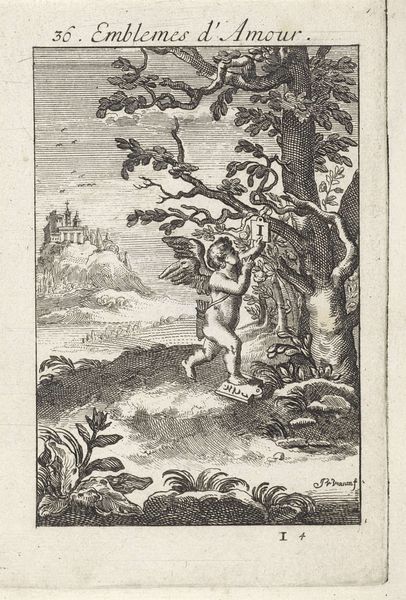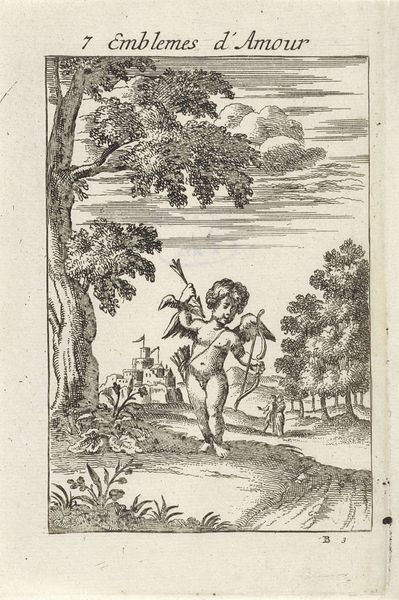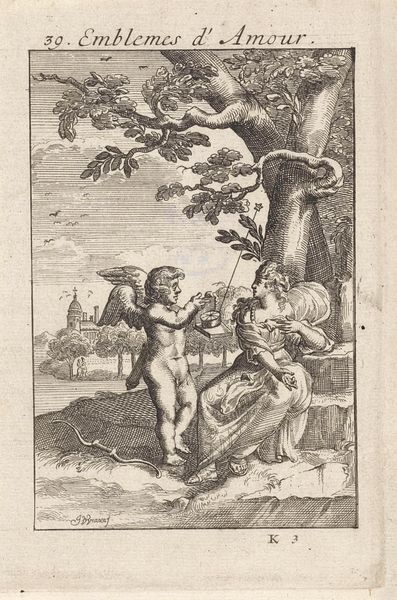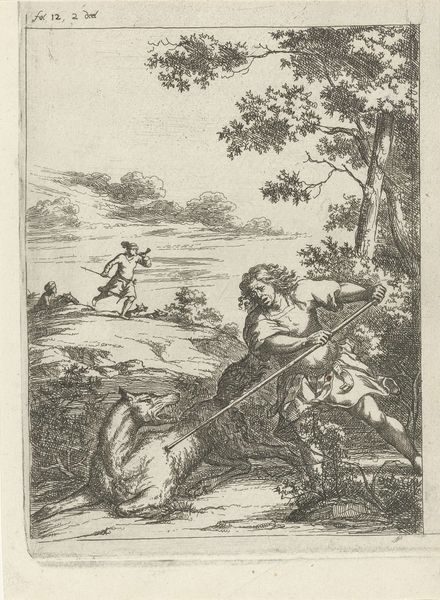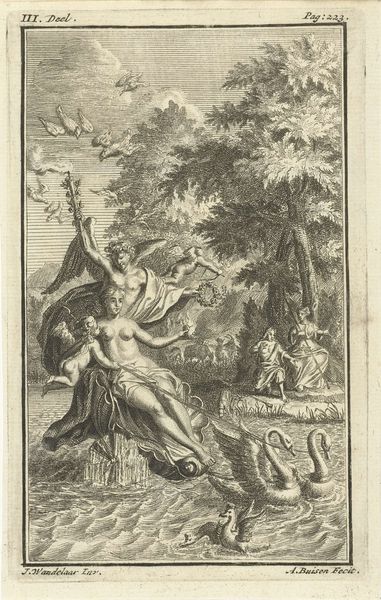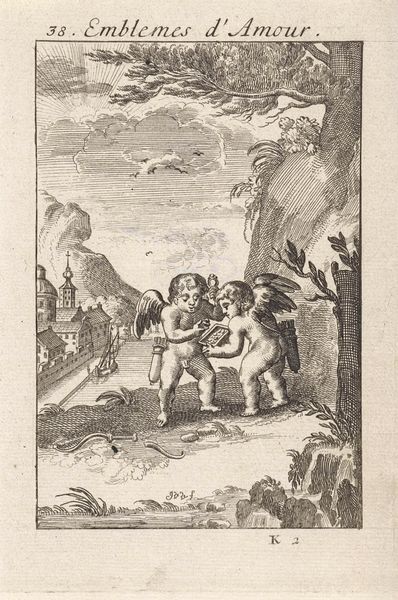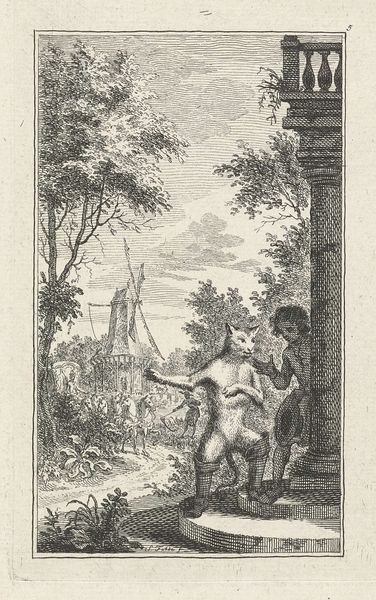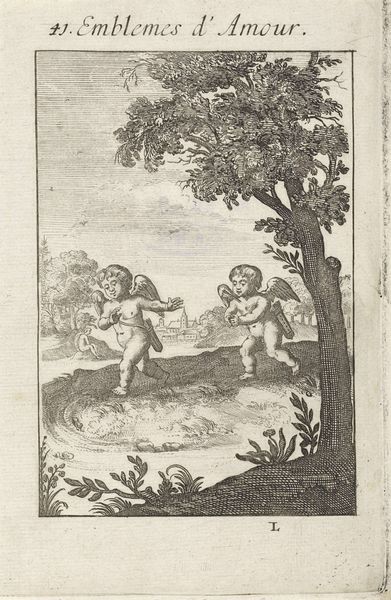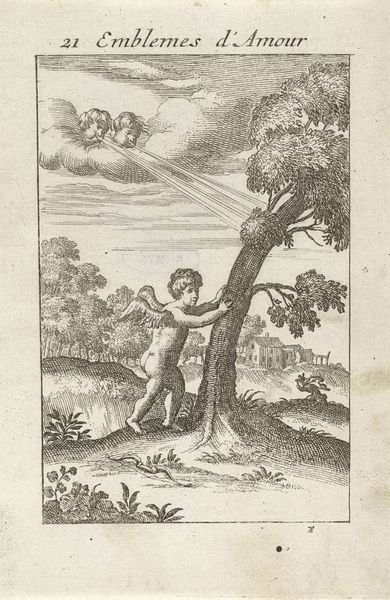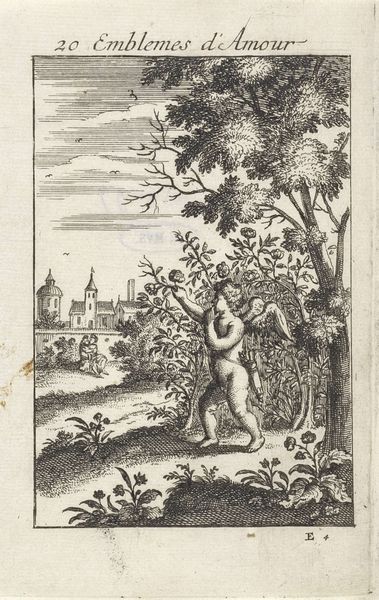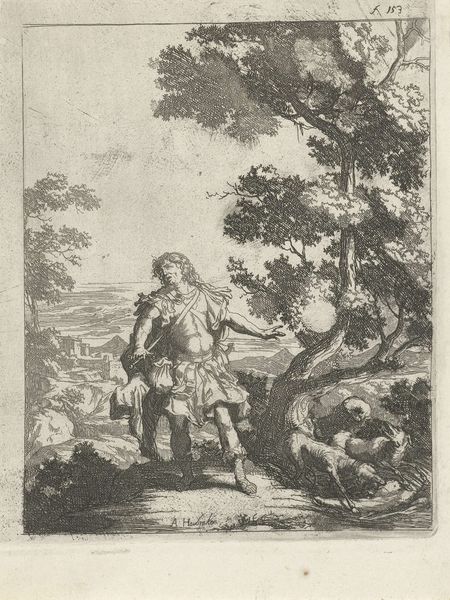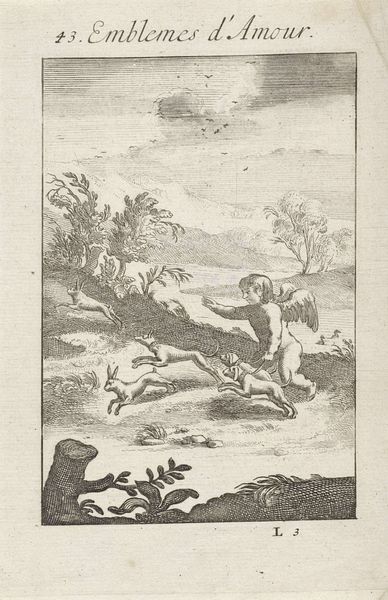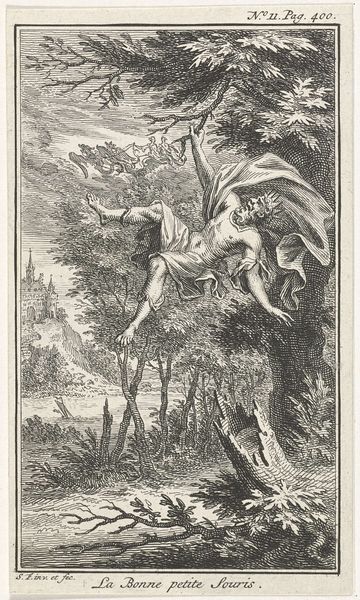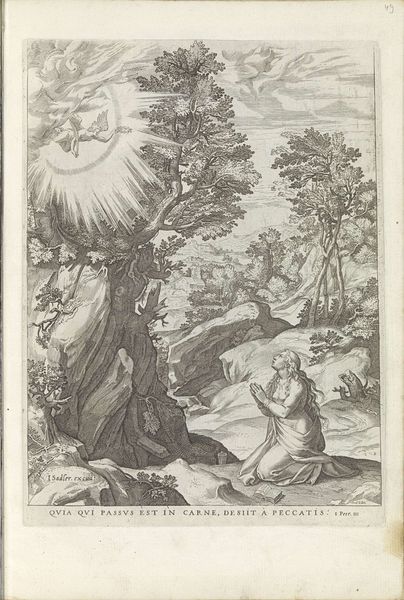
print, engraving
#
allegory
#
baroque
# print
#
figuration
#
engraving
Dimensions: height 145 mm, width 95 mm
Copyright: Rijks Museum: Open Domain
Curator: At first glance, this piece evokes a sense of…mischief, perhaps? A chubby cupid wielding an axe—there's an oddness that is immediately captivating. Editor: This is "Amor met een bijl bij een boom," or "Cupid with an Axe by a Tree," an engraving crafted in 1686 by Jan van Vianen. It resides here at the Rijksmuseum. The title is quite descriptive, but what’s potent here is the visual metaphor—what is van Vianen really trying to say about love? Curator: Right? An axe…it’s so violent, isn't it? Considering all those symbols traditionally attached to Cupid like a bow and arrow or a bouquet of roses. So, what is going on here? Editor: The allegory of this Cupid immediately pushes me towards a feminist reading of power dynamics within relationships. The Cupid appears as an agent of destruction rather than affection. Think about societal expectations of love as selfless; yet, this Baroque interpretation unveils its potentially harmful nature when expressed without balance and reciprocity. Curator: That reading is really quite interesting; it completely flips the idea of gentle Cupid on its head, as that representation of Cupid is not quite as sweet as one might assume. But that axe feels like a rather obvious instrument to express some pain or perhaps some danger. The entire image also has this very distinct, antiquated feel… and with its landscape on the backdrop. Editor: Absolutely. Van Vianen situates Cupid within a broader landscape. We also need to contextualize 17th-century European perspectives on love, beauty, and relationships and consider how systems of class, race, and gender affect power. Cupid using an axe, as opposed to a bow and arrow, speaks to a society still heavily stratified along feudal lines. How free are we to love under a system like that? Is that choice really yours or Cupid's? Curator: Oof! You know, after spending some time with it, the darkness isn’t necessarily sinister, more of a wry observation, which is much more powerful. Like a bitter chuckle instead of outright cynicism. I mean, the tiny smirk in his chubby little cheeks as he destroys that love… Editor: It's this intersection of art history and our contemporary understandings that breathes fresh air into these historical works. Makes one reflect on the enduring complications surrounding love and human agency, right? Curator: Absolutely. It goes from pretty cherub to a complex little rascal, so typical. Thanks!
Comments
No comments
Be the first to comment and join the conversation on the ultimate creative platform.
